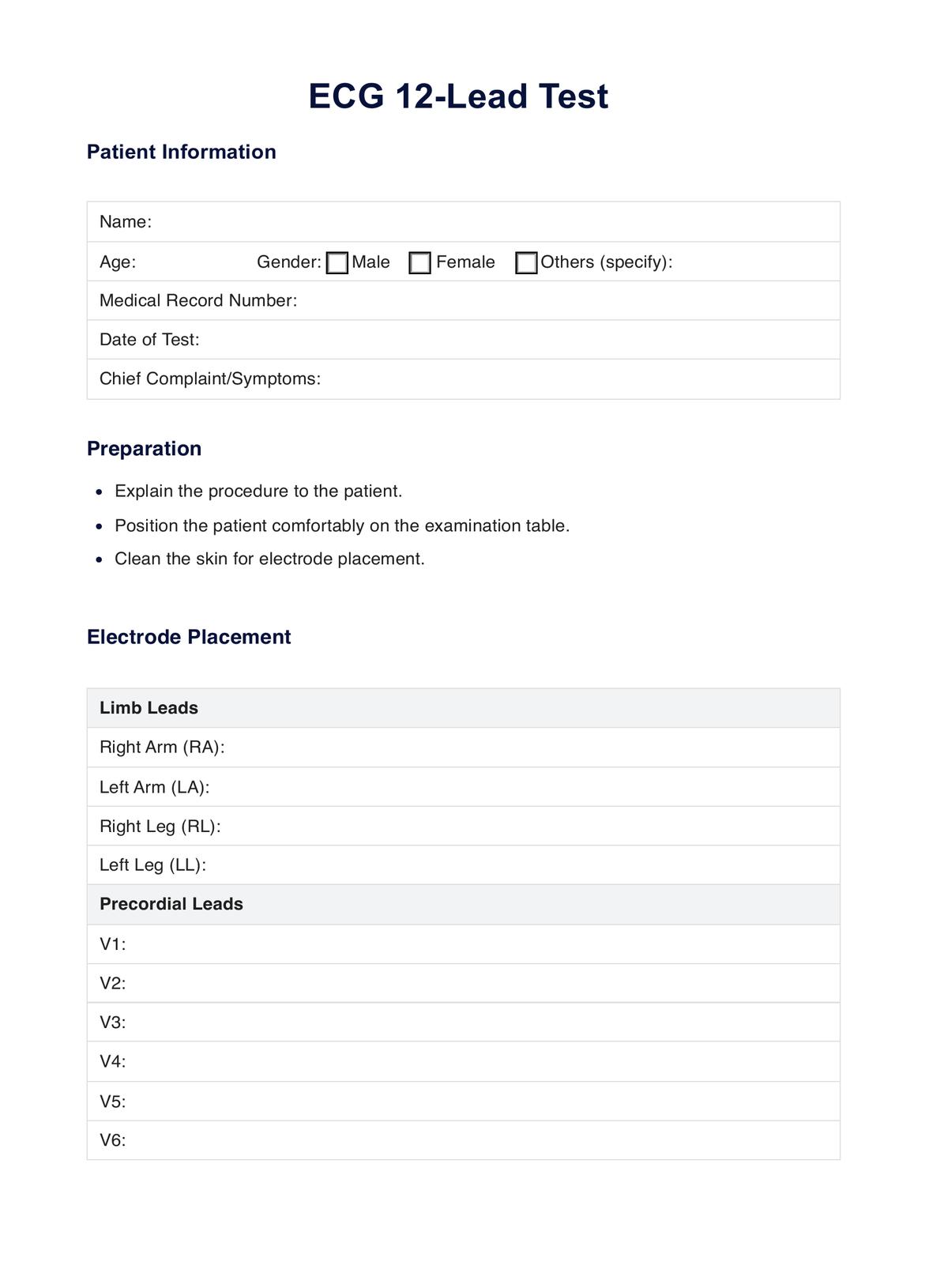Yes, improper electrode placement can significantly impact the accuracy of ECG results. Incorrect placement can distort the recorded electrical signals, leading to misinterpretation of the ECG and potentially missing critical cardiac abnormalities.

ECG 12-Lead Test
Discover the intricacies of the ECG 12-Lead Test, its significance, and its interpretation in our comprehensive guide. Learn more now!
ECG 12-Lead Test Template
Commonly asked questions
A 12-lead ECG comprehensively assesses the heart's electrical activity, allowing healthcare professionals to detect cardiac abnormalities, including arrhythmias, conduction disturbances, ischemia, and infarction.
While a 12-lead ECG is valuable for detecting cardiac abnormalities, it does not provide direct information about the heart's structure or function. Additional imaging tests such as echocardiography or cardiac MRI may be needed to assess cardiac anatomy and function more comprehensively.
EHR and practice management software
Get started for free
*No credit card required
Free
$0/usd
Unlimited clients
Telehealth
1GB of storage
Client portal text
Automated billing and online payments











